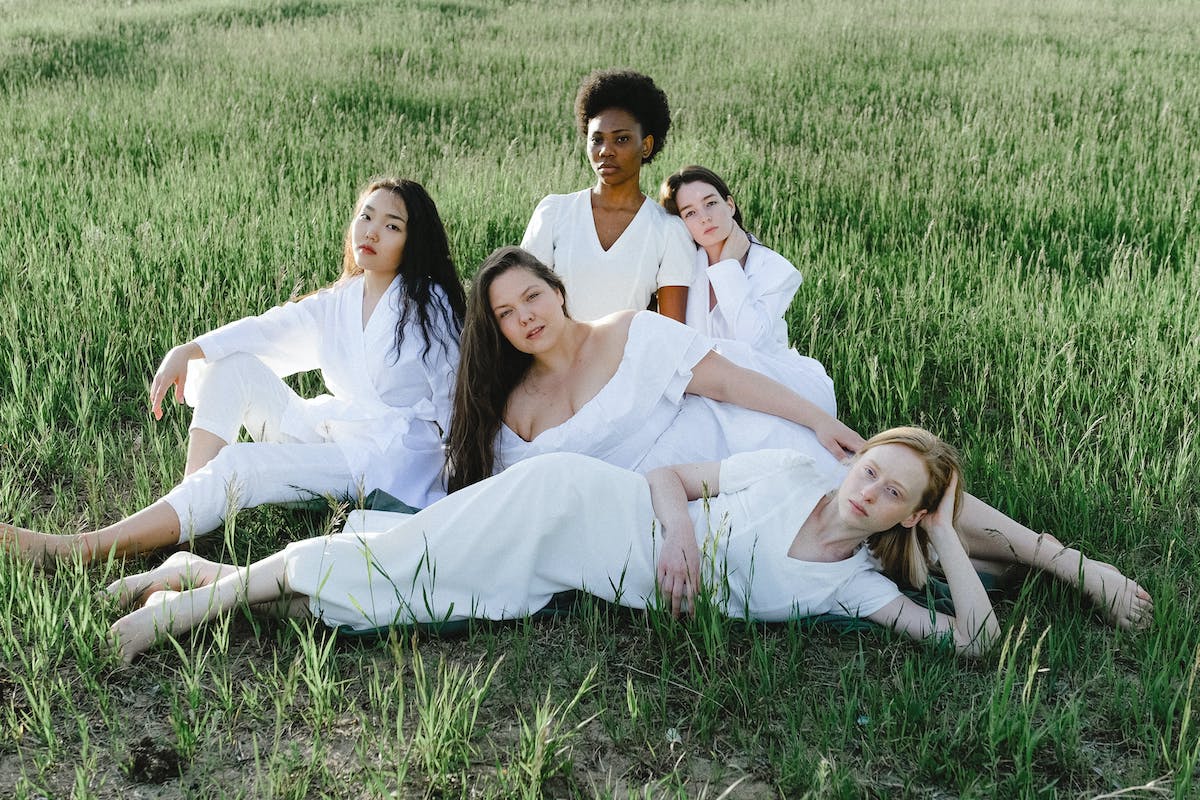Melanin, a pigment naturally present in our bodies, is the main ingredient in hair colour. It comes in different shades, dictating the vast palette of hair colours, from the darkest to the lightest. As well as looking good, melanin plays a protective role, absorbing UV rays and limiting damage caused by the sun. Find out what this pigment does, and how to preserve your hair colour.
What is melanin?
Melanin is a biological pigment that gives hair, skin and eyes their colour. It is produced by specialised cells called melanocytes, located in the basal layer of the epidermis and in the hair follicles.

This pigment is essentially made up of two main types: eumelanin, which gives brown and black tones, and pheomelanin, responsible for red and blonde colours. The proportion and distribution of these two types of melanin determine the diversity of hair colour in human beings.
As well as its role in pigmentation, melanin also has a protective function, absorbing and dissipating the sun's ultraviolet rays, protecting cells from potential damage.
Its production can be influenced by genetic, hormonal and environmental factors, which explains why hair colour can change with age or under certain conditions.
How does melanin affect the appearance of hair?
Melanin, depending on its concentration and distribution in the cortex of the hair, determines the intensity and nuance of hair colour. A high concentration of eumelanin, for example, results in dark hair, while a predominance of pheomelanin creates lighter hair. Subtle variations in these pigment mixtures produce the extraordinary spectrum of hair colours seen in humans.
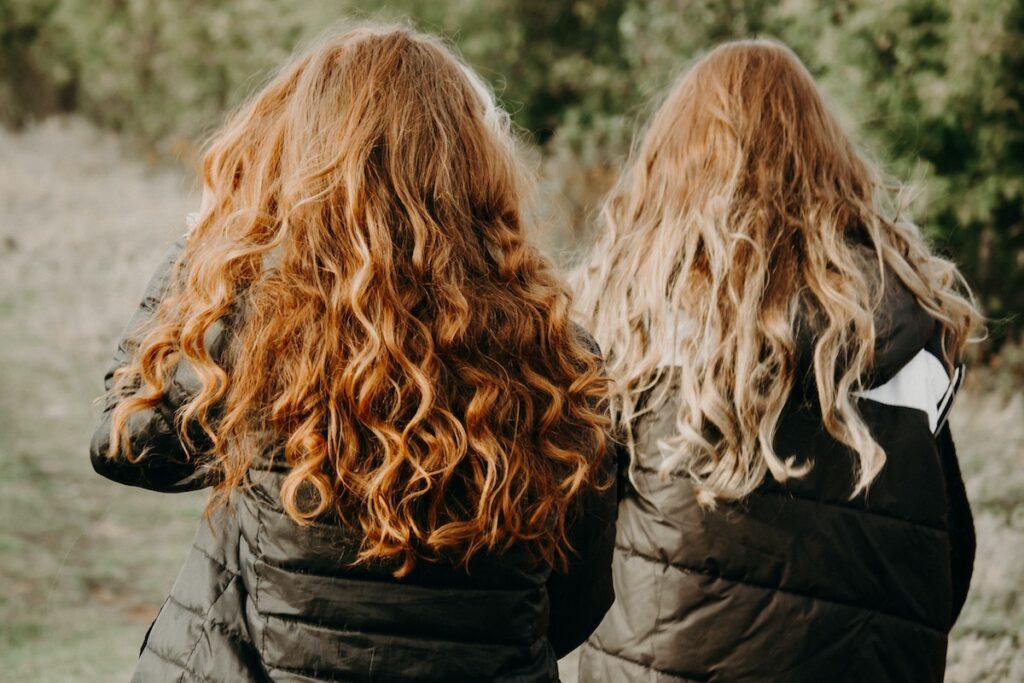
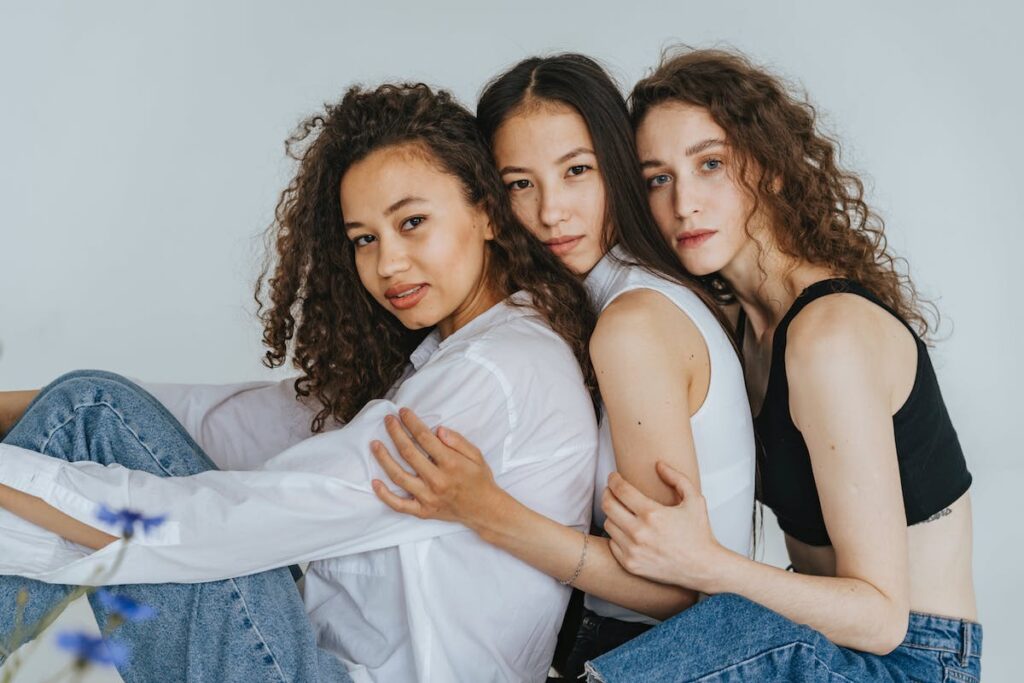
As well as colour, melanin also affects how hair reacts to light. Hair with a high concentration of pigment absorbs more light, giving a richer, more saturated appearance, while lighter hair reflects more light, giving highlights and a distinct shine.
As melanin production declines with age, hair begins to grey and eventually turn white, changing its appearance.
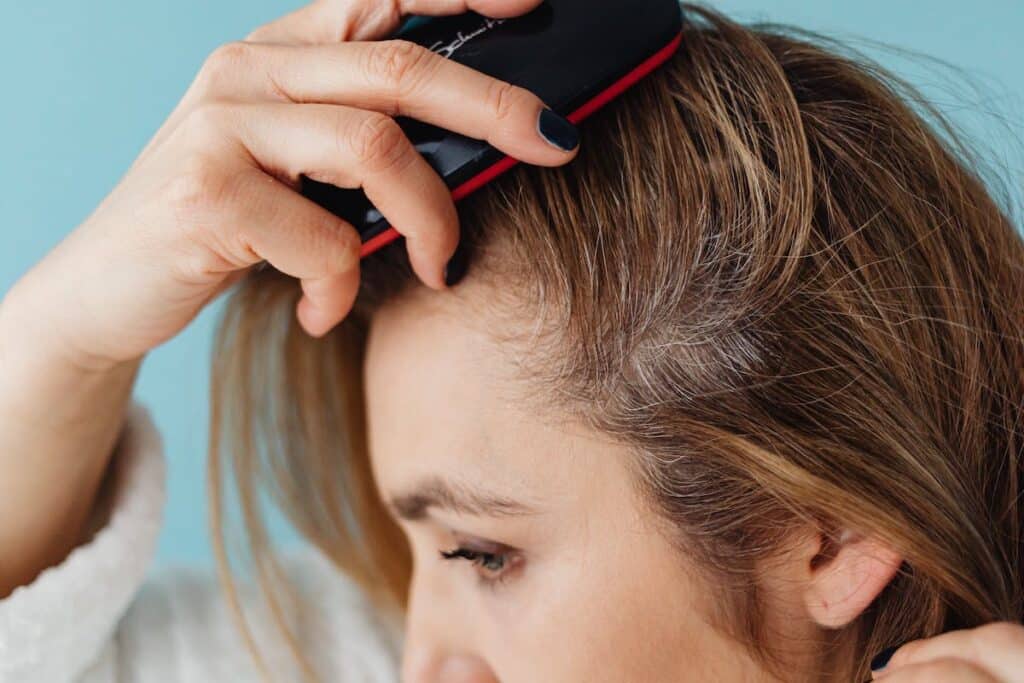
When melanin production declines, hair gradually turns grey and then white.

What are the different forms of melanin present in hair?
Hair contains two main forms of melanin: eumelanin and pheomelanin.
- Eumelanin, which is brown to black in colour, is the dominant pigment in dark hair. It is responsible for the depth of colour and protection against UV rays.
- Pheomelanin, with its red and yellow tones, is responsible for blond to red hair.
The relative proportion of these two types of melanin determines the specific hair colour of each individual.
There is also a less common form called neuromelanin, which is present in the brain but does not play a role in hair pigmentation. The distribution of melanin throughout the hair shaft can also vary, creating unique patterns and highlights. Differences in the size and shape of melanosomes, which are the cellular structures where melanin is stored, also contribute to the variety of hair textures and colours.
Genetic variations determine the amount and type of melanin produced by melanocytes in hair follicles, which explains why members of the same family can have different hair colours.
Finally, environmental factors and ageing can influence melanin production, leading to colour changes such as greying or bleaching of the hair.
Why and how does hair go grey over time?
Greying of the hair is a natural phenomenon often associated with the ageing process. It starts when melanocytes begin to lose their effectiveness. Over time, these cells produce less pigment, leading to lighter hair colour, and eventually to white hair when melanin production ceases completely.
Genetic and hormonal factors
Genetic factors play a major role in hair greying, often determining the age at which this discolouration begins. Hormones can also influence this process; hormonal changes, particularly those associated with the menopause or andropause, can accelerate the reduction in melanin production.
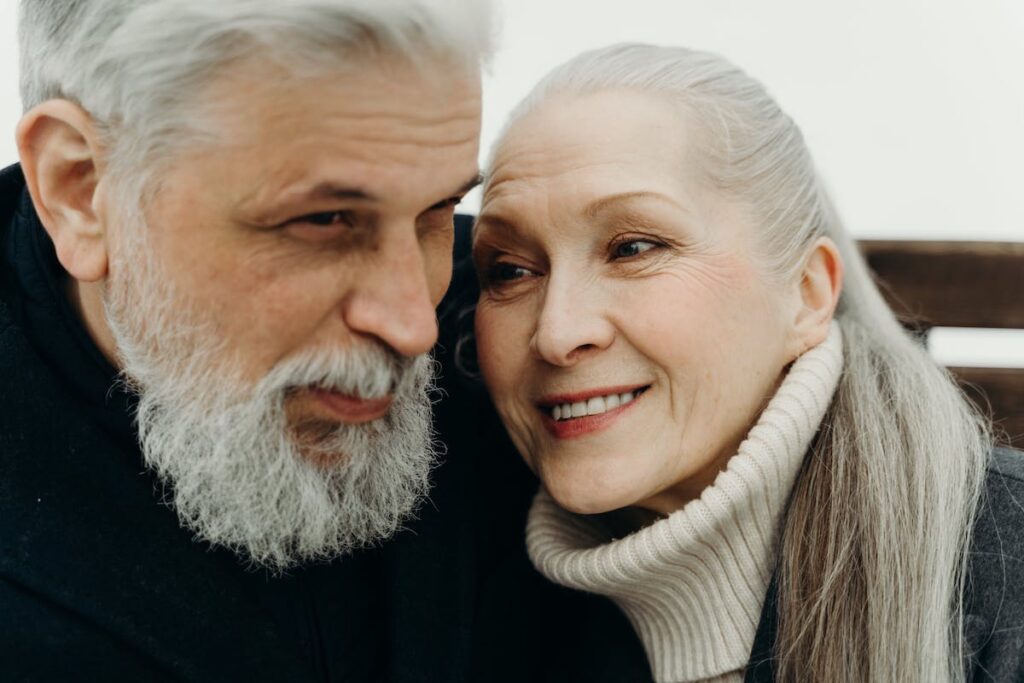
When the menopause and andropause impact melanin production
The influence of environment and lifestyle
The influence of environment and lifestyle on hair colour is significant. Chronic stress, for example, is suspected of playing a role in premature greying by affecting hormones and reducing the effectiveness of melanocytes. Smoking is also a well-known factor that accelerates ageing in general and can induce greying earlier than expected, probably because of its impact on blood circulation and cellular health.
In addition, environmental pollution and exposure to certain chemicals, such as heavy metals, can cause oxidative stress that damages pigment-producing cells. Even an unbalanced diet, lacking in essential vitamins and minerals, can have a negative impact on the health of melanocytes.
So adopting a healthy lifestyle, avoiding smoking, reducing exposure to pollutants, managing stress and eating a nutrient-rich diet can help preserve hair's natural colour for longer.
Cellular mechanisms
On a cellular level, greying can also be linked to the accumulation of hydrogen peroxide in the hair, a substance which, in large quantities, can bleach melanin from the inside out. What's more, with age, the cells' ability to eliminate this peroxide diminishes, which can lead to hair bleaching.
Although there is no foolproof way to stop greying, good nutrition and stress management can help preserve hair colour for longer. Certain cosmetic treatments can also mask the effects of greying, such as hair colouring or the use of specific products to revive hair pigmentation.
How can melanin production be stimulated?
Several strategies can be adopted to stimulate melanin production:
- Adopt proper nutrition: eating foods rich in vitamins and minerals is essential. Vitamins B, C and E, as well as minerals such as iron and copper, play a role in hair pigmentation. Including fruit, vegetables and lean proteins in your diet can help to promote hair follicle health.
- Take care of your scalp: using hair products enriched with antioxidants can support the health of melanocytes in the scalp. Look for shampoos and conditioners that contain nourishing and protective ingredients.
- Maintain good hydration: keeping the scalp hydrated is crucial for the health of melanocytes.
- Reduce stress: oxidative stress can affect the health of melanocytes. Stress management practices can help maintain the integrity of pigment-producing cells.
- Making a hair diagnosis The Centre Clauderer's professional hair analysis identifies the specific needs of your hair and scalp.
Melanin is much more than just a colouring agent for our hair; it is a decisive element in our visual identity and a vital protector against external aggression. Taking care of melanin through a rich diet, appropriate care and a balanced lifestyle is a step towards preserving the natural colour and quality of our hair.

